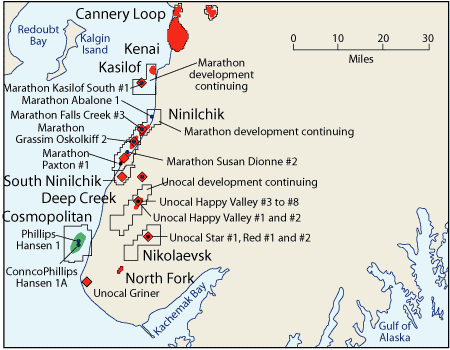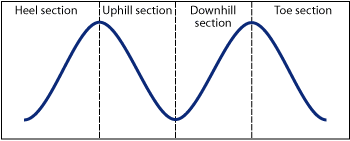DRILLING AND WELL COMPLETION
Examining trajectory effects can improve horizontal well performance
To solve vertical permeability problems, an analytical model can design a horizontal well with undulations, as applied to potential development of an Alaskan field.
Andy Bond, Pioneer Natural Resources Alaska, Inc., and Ding Zhu and Rungtip Kamkom, Texas A&M University
Horizontal wells have been used in recent years to develop oil and gas fields more efficiently than conventional vertical wells. The significant difference in drainage patterns of horizontal wells, when compared with vertical wells, makes it critical that the formation have a certain, minimum vertical permeability for these wells to be productive. In cases where vertical permeability is very low, horizontal wells can lose their attraction because of poor vertical communication. To overcome this disadvantage, a horizontal well can be designed with some undulations in the well trajectory, which will avoid direct dependency on vertical permeability. In addition, this will further increase contact between the well and formation. But, as undulations are added to a wellbore, its hydrodynamics become more complicated, and the effects of wellbore flow may jeopardize productivity. The wellbore trajectory, and effects on productivity and flow, should be studied carefully when designing an undulating well.
Cosmopolitan field is in southern Cook Inlet, Alaska, Fig. 1. Discovered in 1967, the field was never developed, due to inconclusive reservoir evaluation. The structure was re-tested in 2002 by drilling the Hansen #1 wellbore and, subsequently, the Hansen #1A sidetrack in 2003.1 Initial oil in place is estimated to be over 500 million bbl. Primary producing horizons are the Hemlock and Lower Tyonek (Starichkof) sands. Oil gravity is about 24° to 27° API, and the viscosity ranges from 4 to 7 cp. Previous production tests and reservoir studies showed that the formation demonstrates stress-dependent permeability, a function of the drawdown level. Vertical permeability is much lower than the horizontal permeability. This article presents a study of potentially using undulating wells to develop Cosmopolitan field.
 |
Fig. 1. Cook Inlet exploration and production activities.
|
|
THEORETICAL APPROACH
An undulating well is defined as a horizontal well that consists of uphill and downhill sections along the wellbore. To develop a model to estimate productivity, a simplified physical model is used in this work, Fig. 2. Each pair of uphill and downhill sections is defined as a cycle. To obtain an analytical solution of the problem, one assumes that each uphill and downhill section has a constant inclination angle, and the well height for every cycle is a constant, too. Each well has a toe section and a heel section. The well is drilled in an anisotropic box-shaped reservoir, and it can be partially penetrated through the reservoir.
 |
Fig. 2. Physical model of undulating wells.
|
|
|
|
|
|
This article was adapted from a professional society paper for which World Oil was granted the right to print one time only. Therefore, to review the article, you should refer to the actual World Oil magazine in which it originally appeared.
|
|
|
|
|
|
|




